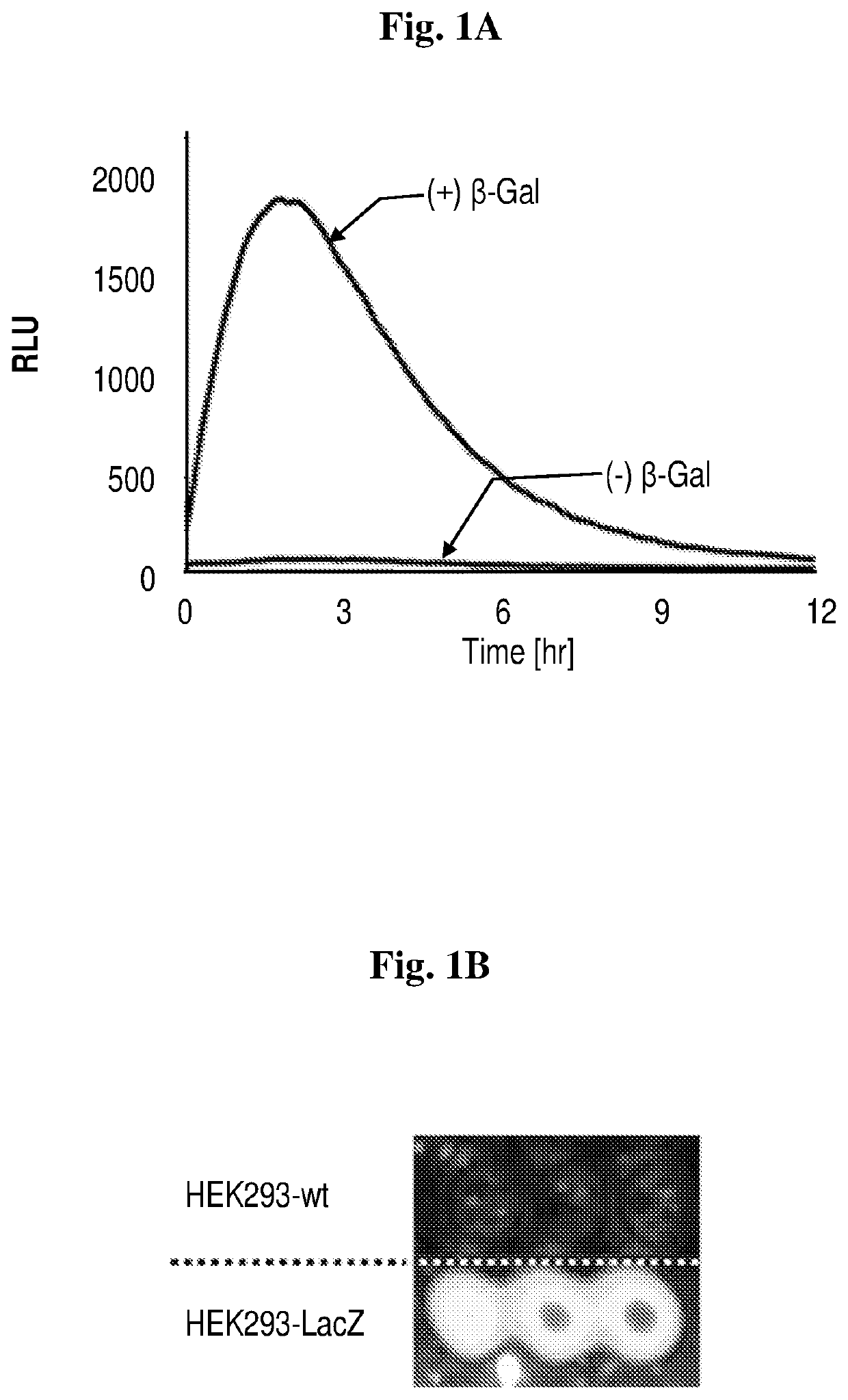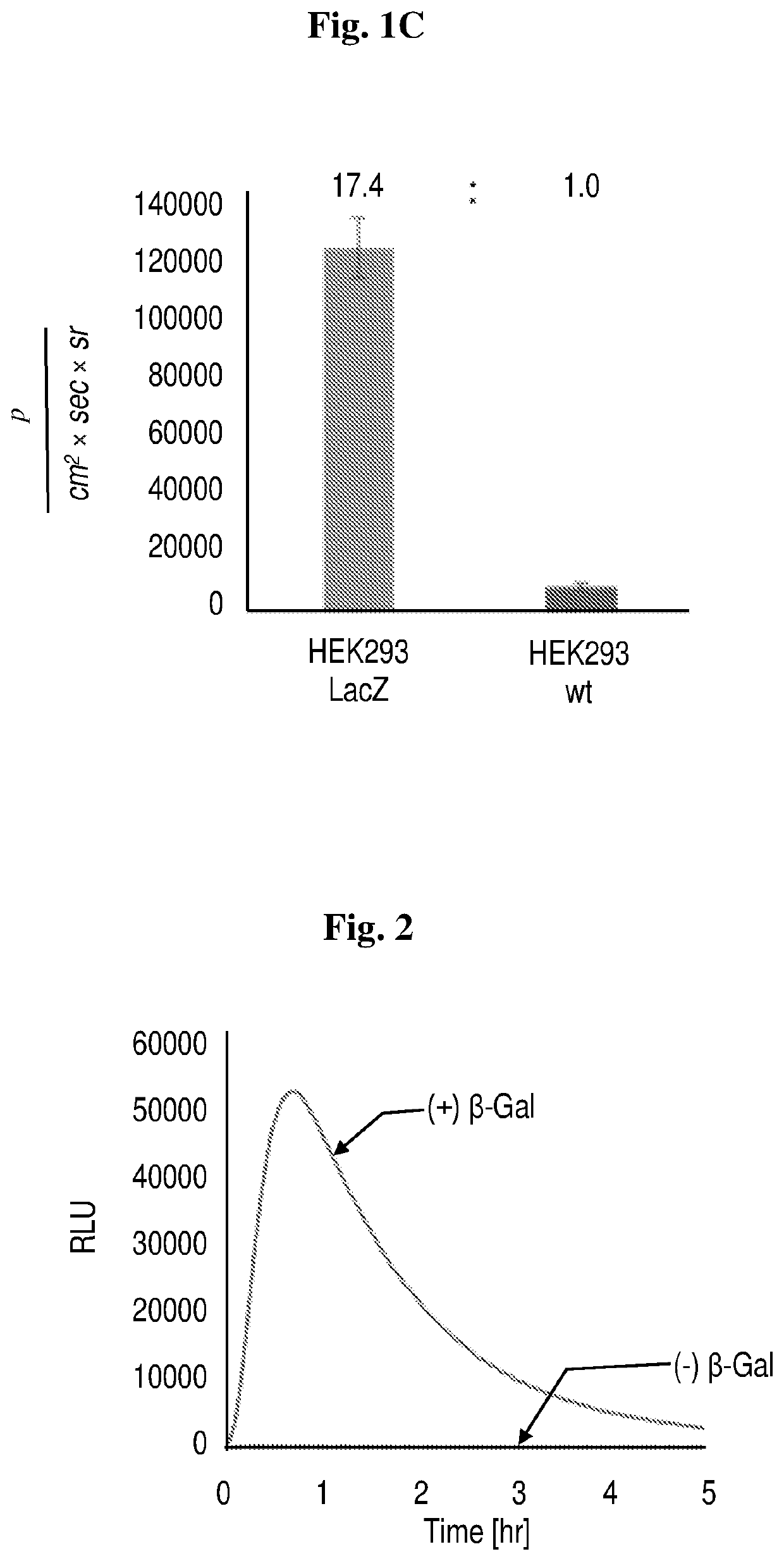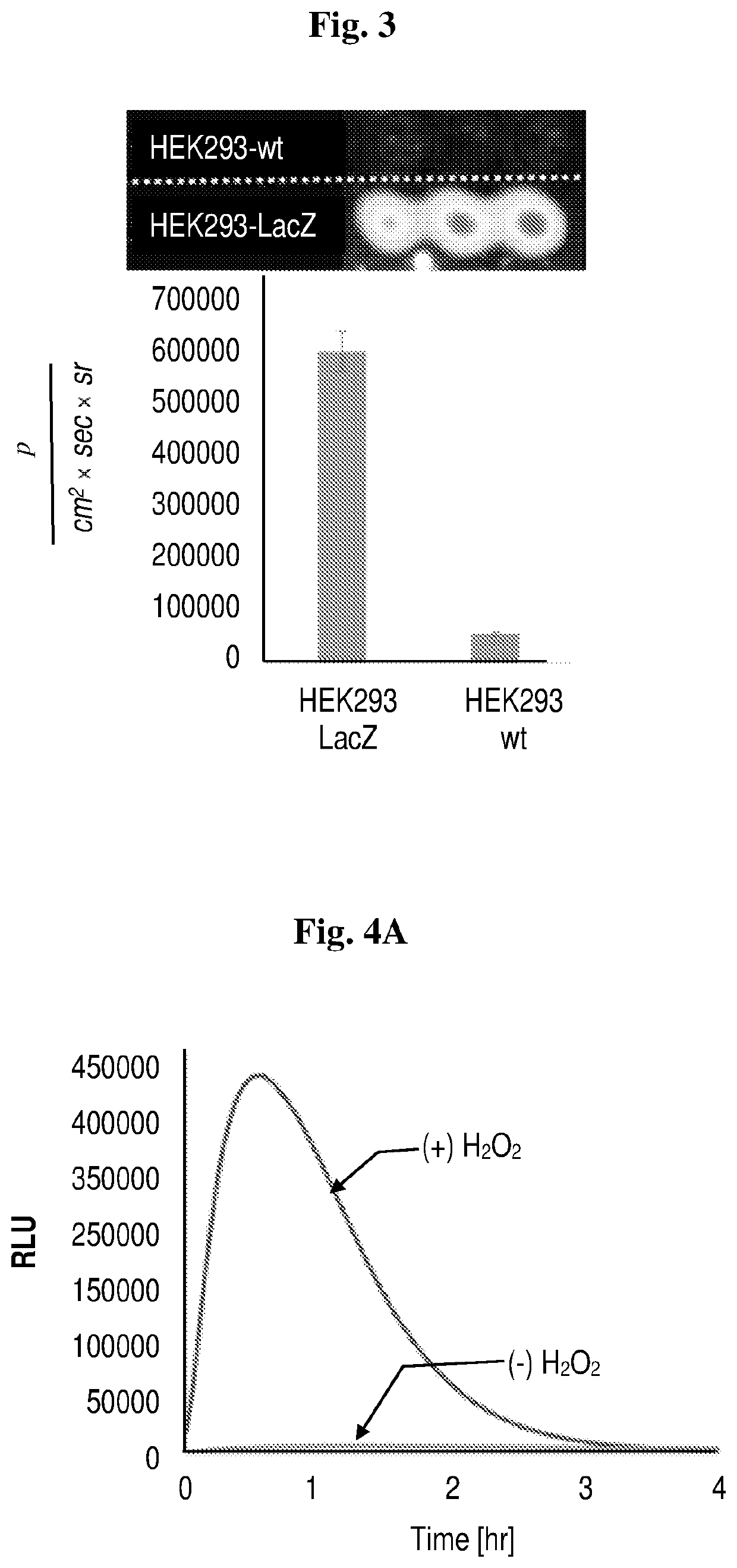Near-infrared chemiluminescent probes for in-vivo imaging
a chemiluminescent probe and in-vivo technology, applied in the field of dioxetane-based chemiluminescent probes, can solve the problems of increasing background noise, limiting the development of luciferase-based bioluminescence methods, and most chemiluminescent probes cannot be used as general methods for detection, so as to achieve less scattered, efficient emitted nir light, and less scattering
- Summary
- Abstract
- Description
- Claims
- Application Information
AI Technical Summary
Benefits of technology
Problems solved by technology
Method used
Image
Examples
examples
Study 1. Synthesis and Efficacy of Chemiluminescence Probes as Disclosed Herein
Synthesis of Luminophores 1-4 and Probes
General Methods
[0083]All reactions requiring anhydrous conditions were performed under an argon atmosphere. All reactions were carried out at room temperature unless stated otherwise. Chemicals and solvents were either A.R. grade or purified by standard techniques. TLC: silica gel plates Merck 60 F254: compounds were visualized by irradiation with UV light. Column chromatography (FC): silica gel Merck 60 (particle size 0.040-0.063 mm), eluent given in parentheses. RP-HPLC: C18 5u, 250×4.6 mm, eluent given in parentheses. Preparative RP-HPLC: C18 5u, 250×21 mm, eluent given in parentheses. 1H-NMR spectra were recorded using Bruker Avance operated at 400 MHz. 13C-NMR spectra were recorded using Bruker Avance operated at 100 MHz. Chemical shifts were reported in ppm on the 6 scale relative to a residual solvent (CDCl3: δ=7.26 for 1H-NMR and 77.16 for 13C-NMR, DMSO-d6: ...
PUM
| Property | Measurement | Unit |
|---|---|---|
| Volume | aaaaa | aaaaa |
| Time | aaaaa | aaaaa |
| Time | aaaaa | aaaaa |
Abstract
Description
Claims
Application Information
 Login to View More
Login to View More - R&D
- Intellectual Property
- Life Sciences
- Materials
- Tech Scout
- Unparalleled Data Quality
- Higher Quality Content
- 60% Fewer Hallucinations
Browse by: Latest US Patents, China's latest patents, Technical Efficacy Thesaurus, Application Domain, Technology Topic, Popular Technical Reports.
© 2025 PatSnap. All rights reserved.Legal|Privacy policy|Modern Slavery Act Transparency Statement|Sitemap|About US| Contact US: help@patsnap.com



